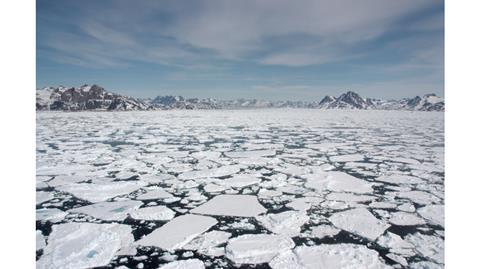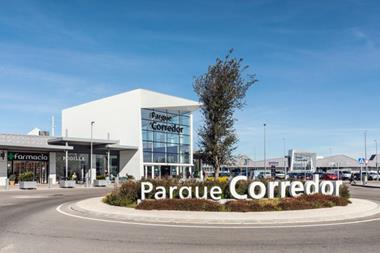There is no time to lose in the drive to combat global warming and the real estate industry has a role to play by stepping up its efforts to reduce carbon emissions, a leading climate scientist told ULI Europe’s virtual annual conference last week.

Sir David King, emeritus professor of chemistry at the University of Cambridge and founder and chair of its Centre for Climate Repair, told a panel that urgent action was needed to stave off the devastating effects of global warming for the world’s cities and the environment. ‘I don’t think this threat from climate change is understood properly by most of the world’s population,’ he said.
In a whirlwind presentation outlining the severity of the threat facing the planet, King touched on some of the most pressing issues, from excessive levels of greenhouse gases (GHG), to Arctic warming, rising sea levels, ‘trapped methane’ and ‘explosive releases’ of the gas through the earth’s surface.
His message was stark: ‘We have overshot by a massive amount the amount of GHG we can have in the atmosphere for a safe world going forward for humanity and the bio systems on this planet.’
The effects of this were being seen in an acceleration of global warming, which, he said, was causing the Arctic circle region to heat up at an alarming rate, in turn causing the ice in the Arctic Sea to melt faster. ‘When all the ice on Greenland melts, sea levels will rise by seven metres. Our cities, 80% of which are built on coastlines, will not survive anything like that,’ he warned, adding: ‘Even a rise of 1-2 metres will threaten a very large number of global cities.’
King singled out South East Asia as a particularly vulnerable region. Planetary warming. coupled with the earth’s own thermodynamic processes will lead to more intense hurricanes and large swathes of the region becoming inundated, resulting in 200-300 million homeless people in 30 years’ time. ‘It’s a massive, potential climate change-driven crisis,’ said King, whose Centre for Climate Repair works together with governments, business and NGOs to instigate action. The professor has also served as chief scientific adviser to the UK government.
Unless action is taken, King said it will be ‘difficult to see how the globalised economy can survive’.
‘It is no good referring to a reduction in energy intensity anymore. We have to reduce [carbon] emissions to zero as quickly as possible,’ King insisted. ‘There is not a moment to spare. We have four to five years to put in place all of our responses to this massive challenge facing civilisation.’
Fit for purpose in zero carbon world
King’s key action point for his audience of real estate investors and developers was to ‘make all investments into the built environment fit for purpose in the zero emissions world’. He stressed this needed to be done ‘from today’.
‘Any investments in infrastructure that are not fit for purpose will be creating “stranded assets”,’ he noted. ‘Everything that you design and build today should be fit for purpose by mid-century and beyond, otherwise it will cause future problems.’
In addition, he listed that cities should be walkable, cyclable, provide ‘efficient and comfortable’ public transport and ample charging facilities for electric vehicles. Wood in construction should be maximised, while concrete and steel should be phased out.
Raphael Mertens, chief risk officer at global investor Allianz Real Estate and a member of the panel, acknowledged real estate’s role as a ‘major polluter’ and suggested technology and innovation as one area where advances could be made to help speed up action.
‘The real estate industry is generally a bit behind on technology. I think there is a lot of scope for improvement,’ he said. Allianz Real Estate, part of insurer Allianz, is committed to reducing the emissions of its €71 bn portfolio to net zero by 2050, but, Mertens suggested, ‘that goal is too far out, we need to focus on what we can do now’.
He highlighted the role of standards and benchmarks in achieving further progress. ‘You need to have a common understanding of KPIs and what you want to achieve. Once you have a benchmark you can start to measure and once you measure you can manage things quite well.’
Benchmark approach
Mertens explained that Allianz’s own benchmark approach enabled the firm to compare the energy efficiency and carbon intensity of an asset or portfolio from the point of purchase or development over a period of five or 10 years. ‘It makes everything far more tangible and actionable if you can compare the actual energy use and carbon intensity of an asset to a sector- and country-specific benchmark which is in line with targets set out under the Paris Agreement.’
Parent group Allianz helped to set up the UN-convened Net-Zero Asset Owner Alliance (AOA) in 2019, together with the United Nations Environment Programme Finance Initiative (UNEP FI), the Principles for Responsible Investment (PRI), WWF and the Mission 2020 campaign.
Elsa Monteiro, head of sustainability at international shopping centre owner and manager Sonae Sierra and the third panel member, said a key challenge was how to balance medium and longer term sustainability goals with short-term needs for financial results. ‘For us it can be hard to engage with our partners on investing in energy efficiency or carbon reduction measures when this has a negative impact on asset valuation or when the focus is on preserving cashflow like at the moment.’
She said that Sonae Sierra, which owns over €8 bn of assets and manages close to €10 bn, operates an environmental management system which tracks performance throughout a building’s life cycle on targets including energy and water efficiency and waste management. The group has reduced the GHG emissions intensity of its operations by 82% since 2005 and is committed to achieving carbon neutrality by 2040.
Emission compensation
Last year, Sonae Sierra launched Sonae Forest, a project which aims to offset non-avoidable CO2 emissions from employees’ vehicles by planting trees. The group also signed up to the global Recovery Better initiative, pledging to follow a sustainable path out of Covid crisis, in tandem with over 150 multinational firms.
Monteiro noted that other sectors in the real estate chain also needed to play their part in the drive to reduce carbon emissions, such as utilities and manufacturers of building materials. In addition, the carbon intensity of sectors like residential, which accounts for 70% of emissions in Europe, should be tackled, she said.
King stressed it was not just about setting targets and measuring but also about providing detailed procedures on ‘how to get there, so people have guidelines to follow’.
‘Getting GHG emissions out of the atmosphere may well be very expensive, but there is no alternative,’ he continued. ‘Getting to zero emissions by 2050 is not even close enough – we need to get there by 2030 if possible. Every effort has to be made now to do this. It is not something we can delay.’










